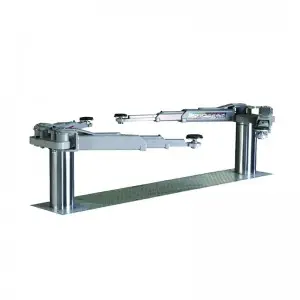The cylinder, a shape with two parallel circular bases and a curved surface, has played a pivotal role in engineering and various applications. From ancient times to modern-day innovations, this simple yet versatile geometric figure has proven indispensable in numerous fields. Its unique attributes and properties have allowed engineers and scientists to develop groundbreaking technologies, from engines to storage containers and everything in between.
The origins of the cylinder can be traced back to ancient civilizations. The Egyptians were among the first to utilize cylindrical shapes, notably in the construction of their colossal monuments, such as the Great Pyramid of Giza. This early usage laid the foundation for future advancements in engineering.
One of the most significant applications of the cylinder is in the field of fluid mechanics. The principles of hydrodynamics heavily rely on cylindrical vessels and pipes to transport liquids and gases efficiently. The design of these conduits is essential in maintaining an uninterrupted flow, as the curved surface minimizes resistance and turbulence. This fundamental cylinder shape has enabled the development of complex plumbing systems, fuel pipelines, hydraulic circuits, and even the water supply networks that sustain our cities.
Perhaps the most famous application of cylinders is in combustion engines. The cylinder plays a central role in both gasoline and diesel engines, housing the piston, where the combustion of fuel and air occurs. This ingenious design maximizes power and efficiency by converting the linear motion of the piston into rotational motion, powering our vehicles and machinery. The development of the internal combustion engine revolutionized transportation and fueled remarkable progress in the industrial and technological sectors.

Cylinder: The Versatile Shape That Revolutionized Engineering
Cylinders have also found their way into the realm of construction. Reinforced concrete columns, such as those used in skyscrapers and bridges, often take the form of cylinders. This choice is not arbitrary; cylinders offer exceptional load-bearing capacity and structural stability. Their symmetrical shape evenly distributes the weight, ensuring an optimal distribution of forces and reduced stress on the materials. Additionally, the cylindrical shape increases resistance to buckling, allowing for taller and more robust structures.

Cylinder: The Versatile Shape That Revolutionized Engineering
The utilization of cylinders extends beyond engineering alone. Storage containers, such as propane tanks and aerosol cans, frequently adopt a cylindrical shape due to their practicality and efficiency. The cylindrical design allows for maximum volume with minimal material usage, making it highly cost-effective. Moreover, the inherent strength and stability of the cylinder ensure the safe storage and transportation of volatile substances, catering to various industries’ needs.

Cylinder: The Versatile Shape That Revolutionized Engineering
In fields like optics and physics, cylinders are integral components of numerous devices. For instance, cylindrical lenses have unique focusing properties and are used in optical systems to manipulate light. They find applications in cameras, telescopes, and laser systems, enabling scientists and engineers to capture and manipulate images. Additionally, magnetic cylinders are crucial in magnetic storage devices like hard drives and cassette tapes, enabling data storage and retrieval.
The power of the cylinder lies not only in its physical attributes but also in its versatility. By combining cylinders with other shapes, engineers have created countless innovative designs. The combination of cylinders and cones gave rise to iconic structures like lighthouses and nuclear cooling towers. Even the humble can of soda owes its shape to a cylinder and a sphere, providing convenience and efficient storage for our favorite beverages.
In conclusion, the cylinder’s impact on engineering is immeasurable. Its extensive range of applications and unique properties have transformed the world as we know it. From fluid transportation systems to the combustion engines that power our vehicles, the cylinder’s contributions are undeniable. As we continue to push the boundaries of innovation, we can trust that the cylinder will remain a cornerstone of engineering advancements for years to come.car quick lift
